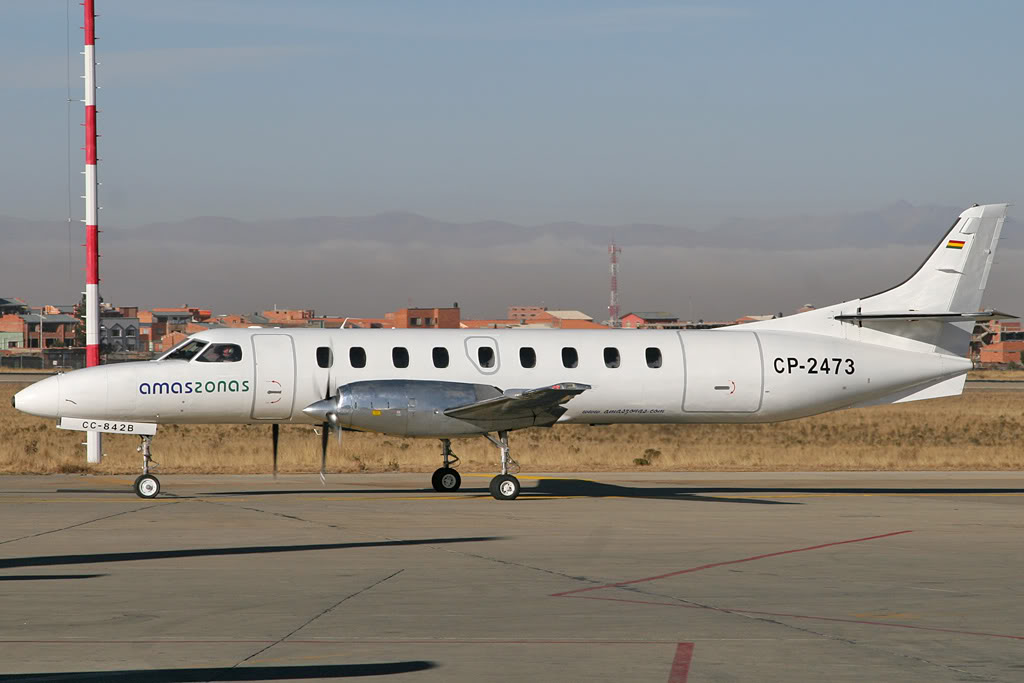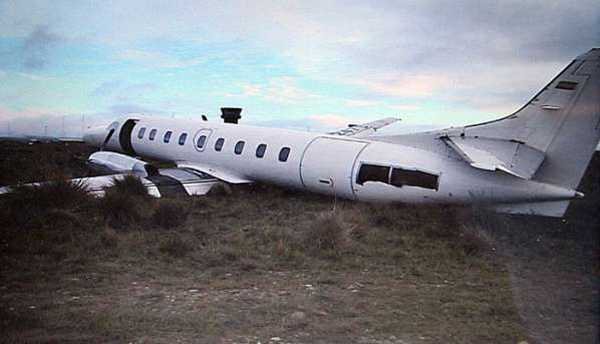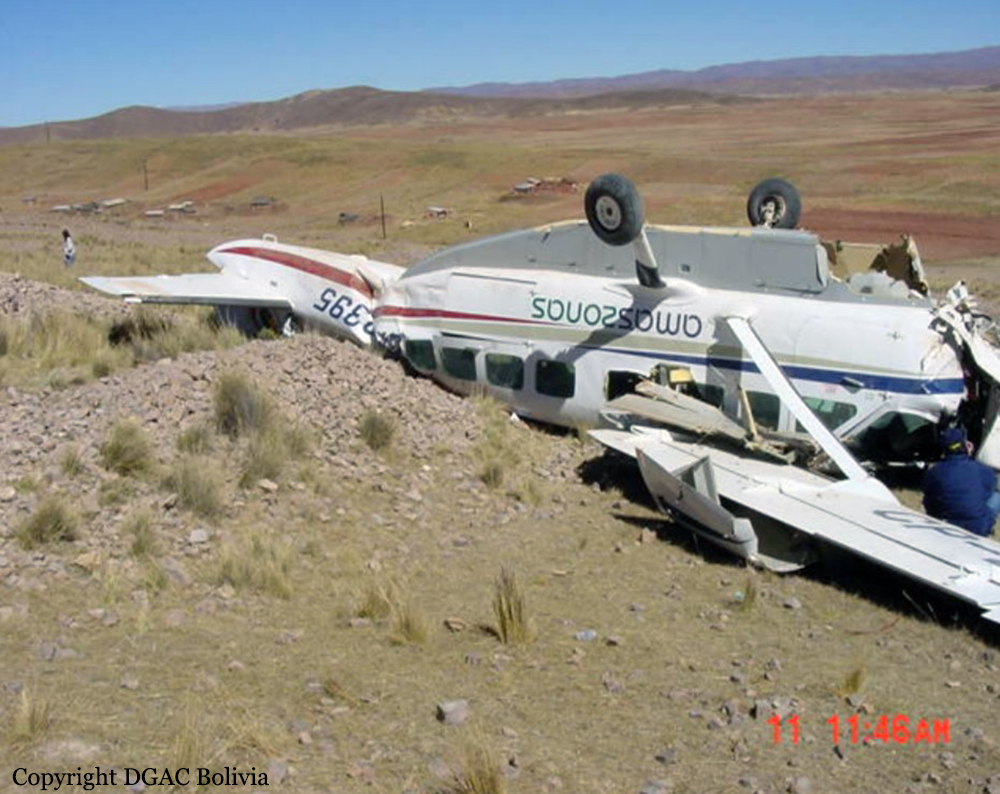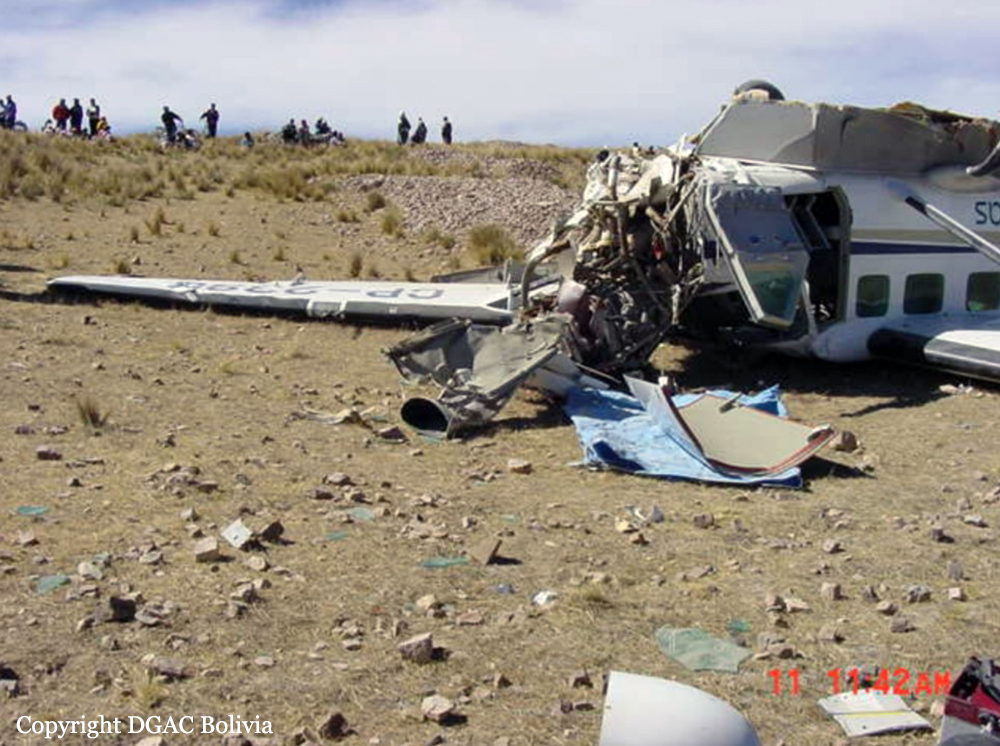Crash of a Swearingen SA227DC Metro III in La Paz
Date & Time:
Feb 27, 2011 at 1510 LT
Registration:
CP-2473
Survivors:
Yes
Schedule:
San Borja - Rurrenabaque
MSN:
DC-842B
YOM:
1993
Crew on board:
2
Crew fatalities:
Pax on board:
6
Pax fatalities:
Other fatalities:
Total fatalities:
0
Circumstances:
On approach to Rurrenabaque, following an uneventful flight from San Borja, the crew encountered problems with the landing gear which failed to lock down. As all three green lights were not ON on the cockpit panel, the Captain decided to divert to La Paz-El Alto Airport where rescue teams were alerted. After touchdown, the left main gear collapsed. The aircraft veered off runway to the left before coming to rest in a grassy area. All eight occupants escaped uninjured and the aircraft was damaged beyond repair.











